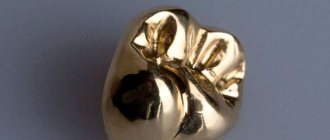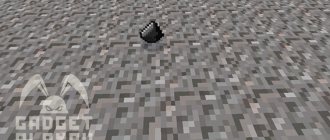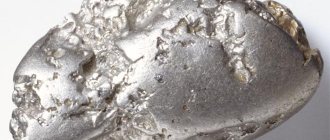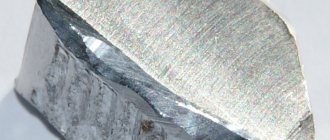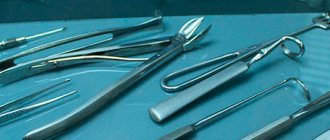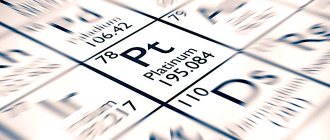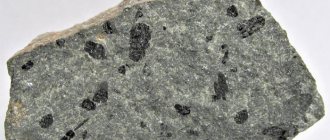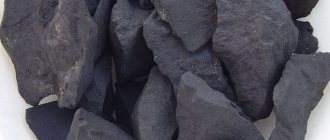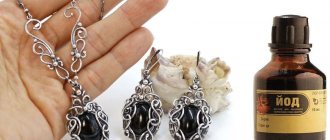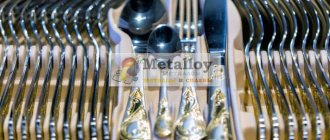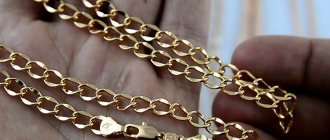She's so different
History has honored bronze, giving it an entire era in the development of mankind. The Bronze Age advanced humanity forward, contributed to the development of crafts, cities and... the redistribution of territorial property.
Bronze is a “versatile” alloy. It was used as a strategic metal (bronze weapons - knives, shields, swords, gun barrels) and as a material for works of art. Bronze statues were considered the pinnacle of ancient Greek art.
Bronze mirrors were known to the mysterious Etruscans as early as the 6th century BC, and were used in Japan in the 18th century AD.
Bronze spear tip (7th-4th century BC).
The production of bronze in ancient times was associated with magic and witchcraft rituals. Blacksmiths were akin to healers or priests, experts in herbs and minerals. In the Russian “Collection of ... craft techniques” you can read:
“... take green copper, add yellow arsenic (orpiment), you get white copper...”
Sugar bowl made of patinated bronze
Production technologies developed and the use of the alloy expanded.
It's not copper!
Our fusion in art has always resonated. And we want to tell you about the glorious “Bronze Horseman”. About what is happening in the second capital, St. Petersburg. The famous equestrian statue of Peter the Great, which stands on a pedestal, the Thunder Stone. The Frenchman Falconet was invited to sculpt the reformer king. Russian sculptor Fyodor Gordeev was entrusted with making a snake, and even then according to a Frenchman’s sketch.
Figurine cast in bronze
Sculpture is the calling card and guardian (as has long been believed) of the city. Only the rider and horse are not copper. They are bronze. He was nicknamed “Copper” by the light hand of our Alexander Sergeevich Pushkin. This is how poetry (the poem “The Bronze Horseman”) overcame the truth...
We recommend: NIOBIUM - myths and reality
However, Pushkin’s example was quite worthy - even the old man Homer, without hesitation, called a bronze weapon copper.
Bigger does not mean better: a quarter of a century ago in China, a huge statue of Buddha made of metal, or rather a bronze alloy, was erected on a hill. The statue is considered the largest in the world.
Composition of bronze alloys
Bronze can be classified according to its chemical properties and manufacturability (properties).
Depending on the composition of bronze there are two types:
- Tin. These products are wear-resistant and well processed. Tin in the alloy is not less than 4%. Zinc, lead, and phosphorus can be added to the alloy.
- Special (tinless). They do not contain tin; beryllium, nickel, iron, cobalt, arsenic and other metals and elements are used as alloys.
The bronze alloy is named after its main alloying element (tin, beryllium, silicon). Sometimes the name contains 2-3 “participants” of the ligature (tin-zinc-lead, tin-phosphorus, tin-zinc).
The zinc content should not exceed the content of the sum of other alloying elements; otherwise it is not bronze, but brass.
Types of bronze according to manufacturability:
- Foundry. Products made from it are resistant to aggressive environments, friction and wear.
- Deformable. It lends itself well to mechanical processing - forging, stamping, bending, perforating.
Why alloy copper?
Even a small addition of alloy to the alloy changes its properties.
Iron strengthens aluminum bronzes and increases resistance to erosion. But this bronze is not suitable for use in sea water.
Alloys alloyed with manganese are cold-resistant and have increased corrosion resistance.
Nickel in aluminum bronzes improves fatigue strength, thermal conductivity, cold resistance, and stability in sea water.
Beryllium bronzes have a number of excellent qualities: thermal conductivity, non-magneticity, high tensile strength.
This list can be made very long, because there are a great many different alloys with the general name “bronze”.
Each type has its pros and cons; it is important to choose the right brand of bronze. We recommend: GOLD - a gift or curse to humanity
Physico-chemical characteristics
There are no clearly established material parameters: each bronze alloy has them individually.
Peculiarities
The composition of the alloy affects the basic characteristics of the material:
- Density.
- Melting temperature range.
- Electrical and thermal conductivity.
Bronzes are difficult to “decompose”: the annual corrosion rate in air is 0.019 mm, in salt water - twenty times faster.
When describing properties, the parameters of tin bronzes are usually indicated. This type is the first to be used.
Advantages, disadvantages
The material is endowed with useful properties:
- Variety of composition.
- Minimum shrinkage (no more than 1.5%).
- Possibility of repeated use: remelting does not impair the consumer properties of the alloy.
- Safety. If the composition contains inherently dangerous elements, for example toxic beryllium, it loses this property when melted.
- Increased elasticity, resistance to corrosion.
The characteristics of bronze can be varied by changing the number and composition of alloys.
The disadvantage is the price - due to the expensive copper in the composition. However, aluminum varieties are cheaper.
Conflicting estimates are caused by the low electrical and thermal conductivity of the alloys. For industrialists this is a minus, for everyday use (plumbing elements) it is a plus.
Influence of components on consumer characteristics
The utilitarian properties of the product are determined by the choice of metals:
- Material with silicon and manganese is more resistant to heat.
- The same effect is created by zirconium, beryllium, and chromium. But they reduce electrical conductivity.
- Aluminum, tin, nickel, silicon increase the elasticity threshold. At the same time, they make the material stronger and more resistant to external aggression (especially corrosion).
- Silicon, phosphorus, lead, zinc reduce abrasion.
- Bronze, which contains a maximum of two percent tin, is forged at ordinary temperatures. 15% of the metal makes the alloy “weapons grade” - hard, durable.
A quarter of a percent of silver makes bronze alloys good conductors of current.
Copper determines the coefficient of electrical and thermal conductivity.
Types of bronzes and their markings
Man came up with different types of alloys of copper and metals.
It is the characteristics of different types of bronze alloys that can explain the stable demand for them.
Chemical composition of various grades of bronze
Markings will help you understand the variety of bronze alloys.
It is easy to determine which additives were added to the alloy and in what quantities. For example, BrOTsS4-4-2.5 means: this is bronze (Br), alloyed with tin (O), 4%; zinc (Z), 4% and lead (C), 2.5%. 100 remains for copper - (4 + 4 + 2.5) = 89.5%.
Wrought, cast bronzes are marked slightly differently. In the marking, the first letter of the alloying element is put first, the number after it is the percentage of the element in the alloy.
Example: BrO5Ts5S5, where:
- Br is bronze;
- O (tin) 5%;
- C (zinc) 5%;
- C (lead) 5%.
Amount of copper in the alloy: 100% - 5% - 5% - 5% = 85%.
Properties and applications of beryllium bronzes
Where are different types of bronze alloys used?
The table shows the grades of bronze and where they are in demand.
| Bronze markings | Application |
| BrB2, BrBNT1.9 | In the production of spring elements and wear-resistant parts |
| BrO8S12, BrO10S10, Br010S2N3 | Inserts, bushings for bearings |
| BrO8TS4 | Pump fittings and parts |
| BrO3Ts12S5 | For work in water and steam |
| BrO3TS7S5N | Works in seawater and oils |
| BrKMts3-1, BrKN1-3 | Spring elements in aviation, maritime affairs |
| BrAMts9-2 | Wear parts for hydraulic installations |
Production at a steel mill
For the charge, pure metals and alloys in pigs are taken. The former are mainly used for expensive deformable non-ferrous metals; from the latter, castings are obtained. The process includes 4 stages: loading, melting, heating, degassing treatment.
For loading, take calcined refractory graphite chamotte/carboride crucibles. Tin bronze is smelted under charcoal or with salts at 1170° C. To obtain liquid phosphates and deoxidation, phosphorous copper is added to the mixture. Next, the remaining heated components are introduced into the crucibles. The quality of the final product is affected by the type of furnace: electric, arc and induction. The shorter the process, the lower the gas saturation and waste of the alloy.
Refractory components are introduced in the form of alloys. After mixing, the remaining metals are added and heated to 1200° C. Before removal from the furnace, the mass is deoxidized to improve the fluidity of the melt.
When producing from waste and secondary alloys, the order in technology is changed: first, copper is melted and deoxidized, and at the end recycled metals with impurities are added. If the raw material for melting contains silicon, magnesium, aluminum, salt fluxes are added. They are responsible for the stability of the remelting, ensure that the desired chemical composition of the metal is obtained, and reduce waste and oxidation. To improve performance, factories resort to:
- to centrifugal and injection molding;
- selective laser melting;
- creating matrix compositions with finely dispersed high-strength particles from refractory powders.
Degassing involves purification from hydrogen. For this purpose, blow with dried argon or nitrogen for 3-10 minutes, focusing on the volume of the furnace. To improve the properties of bronze, laser modification is used. The technology of plasma surfacing with electrodes and spraying makes it possible to obtain a top layer with the desired properties. Before pouring into molds, samples are taken.
Gating systems
Standard sand molds are not suitable for producing ingots. For work, molding mixtures with a predominance of clay are used. Pouring into matrices is carried out at 1100–1200 °C. The choice of mode depends on the mass, shape, phosphorus content for fluidity and shrinkage. Rapid cooling is used for curing. It reduces pores and thickens the casting skin.
Pouring into metal molds
The method is designed for tin castings. A special feature is the use of chill molds - cast iron matrices with steel rods that provide the required density. Before use, they are lubricated with a mixture of machine oil and graphite, then heated and liquid metal is poured. To reduce shrinkage stress, the workpieces are removed after curing.
Centrifugal casting
This method produces up to 38% of wear-resistant parts: gears, bushings, liners. A distinctive feature is the filling of steel molds mounted on rollers with the melt. Due to the action of centrifugal forces inside the container, the density increases. After casting, the blanks are cooled with water. The final melting products are used for further processing.
Ingots formed in different ways belong to the same batch. A passport is drawn up for the product indicating the weight and number of pieces. Be sure to write down the result of quality control and the brand of the product.
How to smelt bronze
Bronze alloys are produced by combining copper and alloying materials.
The production of the material takes place in crucible furnaces and induction electric furnaces. First, charcoal or flux is loaded into the furnace (to lower the melting point, making it easier to separate the finished alloy from unnecessary impurities). The charge (in this case, copper) is heated, and the alloy MF9, MF10 (phosphorous copper) is introduced as a modifier and deoxidizer. It's time to introduce the ligature. The entire mixture is heated again, stirred and the deoxidizing agent is added again. The finished mixture is poured into molds.
We recommend: RHODIUM - the royal rose of platinum group metals
The cooled “ingots” removed from the mold receive documents. They indicate the batch number and weight, alloy grade, and manufacturer's trademark.
Where to find Surtling cores
Materials such as wood and stone are easy to find. At the same time, getting surtling kernels is not easy.
10 pieces will be needed to build a coal furnace and a smelter - two key buildings needed for the production of metals. To find the surtling cores, you need to find the burial chambers.
Around the entrances to the dungeons there are small stone structures guarded by skeletons, found in the Black Forest. Before entering, you need to create a torch to illuminate the path in the crypts. You will need 1 wood and 1 resin.
The burial rooms contain several winding corridors, wooden doors and skeletons. You will need to examine the cameras and find 10 Surtling cores (they look like glowing cubes).
From strings to bearings
The formula for success of bronze is a combination of rare qualities of the “union of metals”.
Therefore, its use has only increased since the end of the Bronze Age.
The trumpeter plays the anthem...
The music would not be so beautiful and expressive if it were not for the amazing melodious fusion. At first, the properties of bronze were appreciated by priests. In the Middle Ages, the church demanded more and more “bell bronze”. Asian clergymen made full use of the sonorous voice of bronze: they made bells, “singing bowls”, gamelans, and gongs from it.
Nowadays bronze sings with the strings of pianos, double basses, harpsichords, banjos, and guitars.
Phosphor bronze saxophones have a unique voice.
For industry
It is clear that the industry did not fail to snatch its piece of the bronze pie.
- Mechanical engineering (bearings, shut-off valves, bushings, friction units of fittings); rolled metal (sheets, pipes, rods).
- Bronze wire - for wires, cables, welding electrodes.
- Aviation and shipbuilding, rocketry and the simplest bearing shells - our alloys are in demand everywhere.
- In the jewelry industry, aluminum bronze with its golden color is used to make cheap costume jewelry. Bronze alloys were often used for coinage, especially in ancient times.
Bronze products

